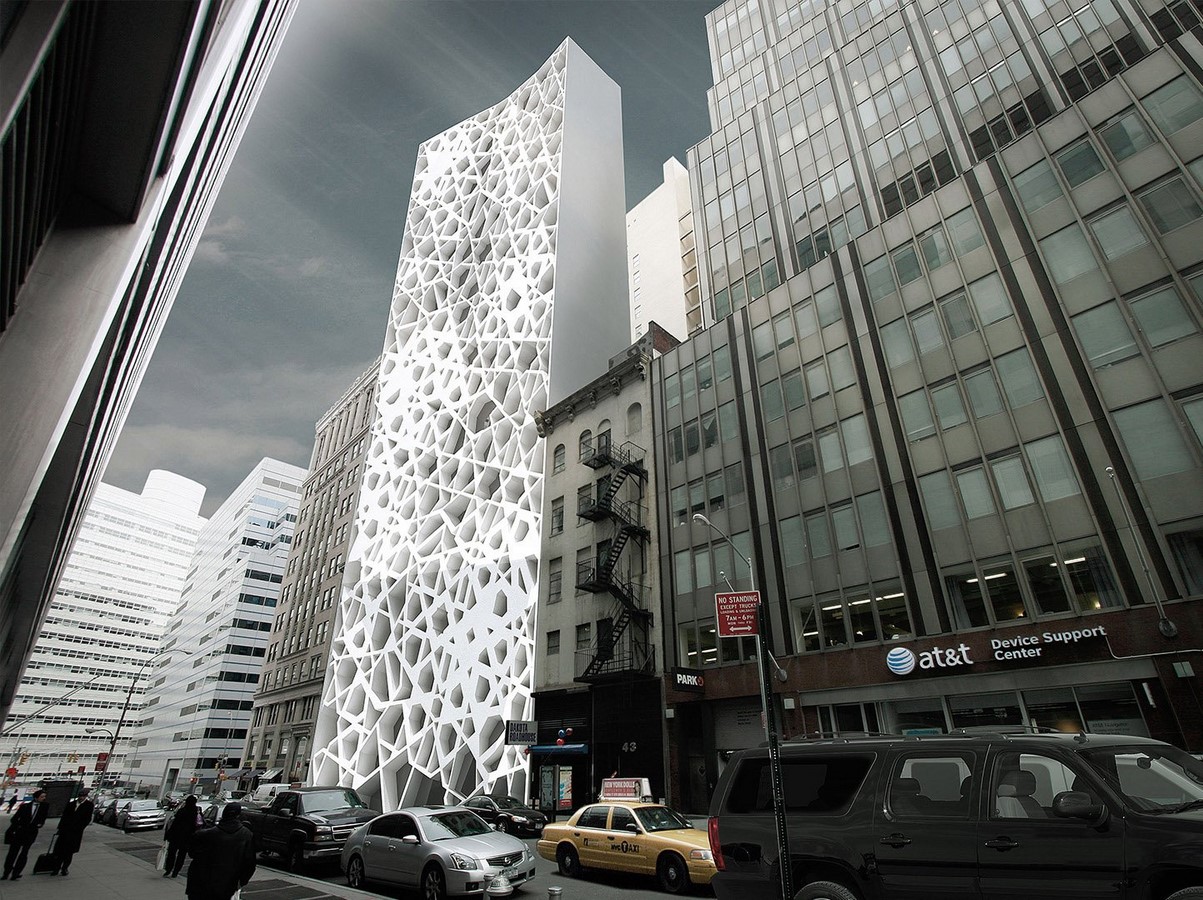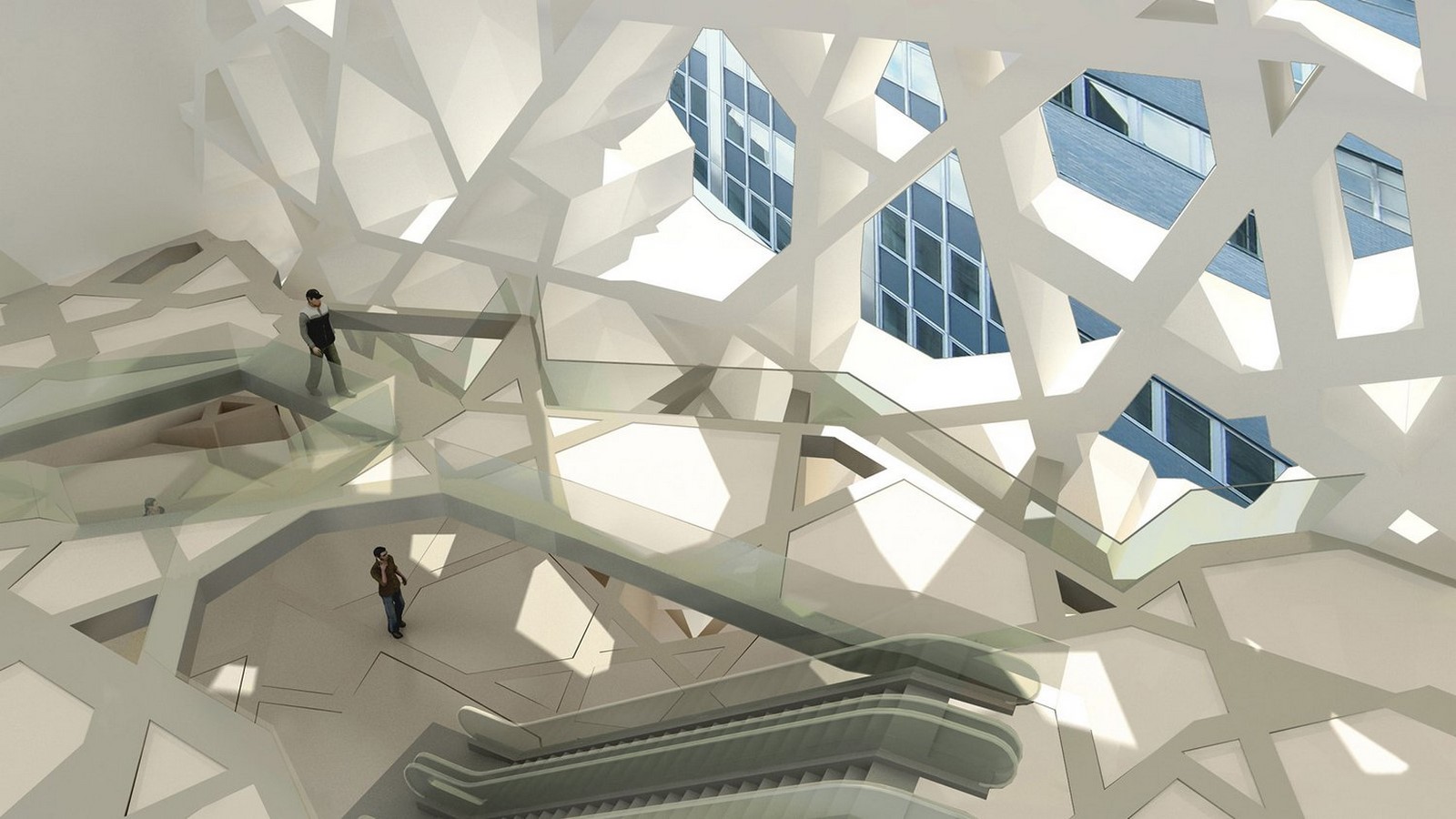The Park 51 Cultural Centre is a bold architectural vision that is poised to change the urban environment in Lower Manhattan, New York City. The world has taken notice of this ambitious project because of both its spectacular appearance and the controversy that surrounded its conception. It was intended to be a light of religious and cultural dialogue.
The Cordoba House, also known as the Park 51 Cultural Centre, is a proposed mixed-use development that intends to promote understanding and eliminate gaps by combining public areas with places of worship and cultural institutions. The project’s design, a tasteful fusion of modern and traditional Islamic architectural features, is proof of the ability of architecture to inspire and bring people together. The Park 51 Cultural Centre is a superb example of how contemporary architecture and cultural value can coexist. In this case study, we will examine the design, the materials and building methods, and the commitment to sustainability that characterises this architectural marvel.
Where Culture Meets Urbanization

Planning
The Park 51 Cultural Centre was designed to be a symbol of interfaith dialogue and a reflection of the cultural diversity of New York. The planning phase concentrated on developing a setting that would promote understanding and unite people from different backgrounds. A balance between a house of worship, a cultural hub, and a centre for community involvement was sought in the design.
Design: A Fusion of Tradition and Modernity
The Park 51 Cultural Centre was created by SOMA Architects, a company located in New York known for its cutting-edge and culturally aware designs. An in-depth knowledge of Islamic architectural principles and a dedication to designing a warm and visually appealing space served as the firm’s guiding principles for the project.
The exterior of the building is an impressive sight, covered in a latticework of white starlike patterns that are reminiscent of the elaborate geometric patterns used in Islamic architecture and decorative tiles throughout the Middle East. This latticework is both a decorative nod to Islamic tradition and a practical component that provides shade and lowers energy use inside the structure.
When guests enter the Park 51 Cultural Centre, they are welcomed by a towering atrium that is illuminated by daylight coming through a glass roof. A sense of openness and community is fostered by the atrium, which acts as a focal point for gatherings. These locations invite guests to interact with the various manifestations of Islamic culture to promote intercultural understanding and appreciation.
Design Solutions: Addressing Challenges and Embracing Opportunities
The design process for the Park 51 Cultural Centre was not without its difficulties. The challenge for the architects was to design a building that would both boldly express Islamic identity and blend in with the urban landscape around it. By utilising a design language that is both cutting-edge and deeply anchored in tradition, SOMA Architects expertly managed this challenge.
An additional important factor in the design process was sustainability. Incorporating a variety of environmentally friendly elements into the design, including a green roof, rainwater collection system, and energy-efficient HVAC system, the architects made sure that the structure honoured both its historic history and its environmental responsibilities.
The Park 51 Cultural Centre was built by the architectural firm to be a symbol of unification. Its distinctive, contemporary façade is covered with elaborate patterns that are influenced by both Islamic and American architectural themes. Steel, glass, and concrete were combined to create the structure, giving it a modern appearance while also honouring its historical significance.
The building’s integration of Islamic geometry into its contemporary framework is one of the most inventive design concepts. In addition to being aesthetically pleasing, the lattice-like patterns on the façade also aid in shading the internal rooms from direct sunshine, lowering the demand for excessive air conditioning. The interior decor successfully combines openness and cosiness, creating a welcoming environment.

Design Philosophy: Unity Through Multiplicity
The Park 51 Cultural Center’s architecture is based on the profound philosophical idea of unity through diversity. The design ethos focuses on encouraging a sense of belonging, inclusivity, and conversation. Establishing a location where people from all cultures may live side by side, learn from one another, and have deep, meaningful interactions, goes beyond the traditional idea of a cultural centre. The plan illustrates how architecture can be a potent instrument for fostering harmony and understanding amongst various populations. The architecture of the building exemplifies this philosophy by fusing various ethnic traditions and displaying an inclusive and open mindset. The elaborate patterns and symbolism of the external latticework, which symbolises the harmonious fusion of various cultures and traditions within Park 51, act as a visual metaphor for this oneness.
Materials/Construction – A Marvel of Innovation
The construction of the Park 51 Cultural Center is a testament to the innovation and the use of cutting-edge materials.
Special Construction Techniques
The building’s unusual façade was made utilising a blend of conventional and modern building methods. Precast concrete panels, which are each carefully crafted to ensure they match smoothly with the design, are used to create the lattice patterns on the façade. To maintain the stability of the structure, the construction crew also used cutting-edge structural engineering methods. The utilisation of a central support core and several carefully positioned steel beams allowed for the creation of the structure’s necessary large open areas. This gave the internal rooms a feeling of openness and grandeur in addition to ensuring stability.
Innovative Materials
The success of the project was greatly influenced by the usage of novel materials. Additionally, ecologically friendly building practices were promoted by using recyclable and sustainable materials whenever available. For instance, the centre’s dedication to sustainability is shown in the use of wood from sustainably managed forests for interior finishes.
Sustainability – A Green Beacon
The Park 51 Cultural Centre, located in the heart of Manhattan, is not only a representation of intercultural cooperation but also a shining example of sustainability. The Park 51 Cultural Centre was designed and built with sustainability at its core. The building’s green roof, which is covered in flora, acts as insulation to save energy and produce a cooling effect.
To conserve water, the Park 51 Cultural Centre also uses a rainwater collection system to water the nearby plants. Beyond the building stage, sustainability is a priority. Recycling programmes, energy-saving lighting, and environmentally friendly landscaping are just a few of the ways the centre promotes green practices in its everyday operations.

Conclusion: A Beacon of Unity and Cultural Dialogue
In summary, the Park 51 Cultural Centre in New York is an amazing piece of architecture that skillfully combines modern style with historical relevance. It is a prime example of contemporary architecture due to its careful planning, creative architectural ideas, use of cutting-edge materials and construction methods, and uncompromising dedication to sustainability. This amazing building serves as a tribute to architectural skill as well as a representation of harmony and understanding in a diverse and constantly changing globe. The Park 51 Cultural Centre is a living example of how architecture can break down barriers and bring people from different backgrounds together. Its architecture, which successfully combines traditional Islamic design features with modern aesthetics, provides a place that is both warm and visually appealing.














